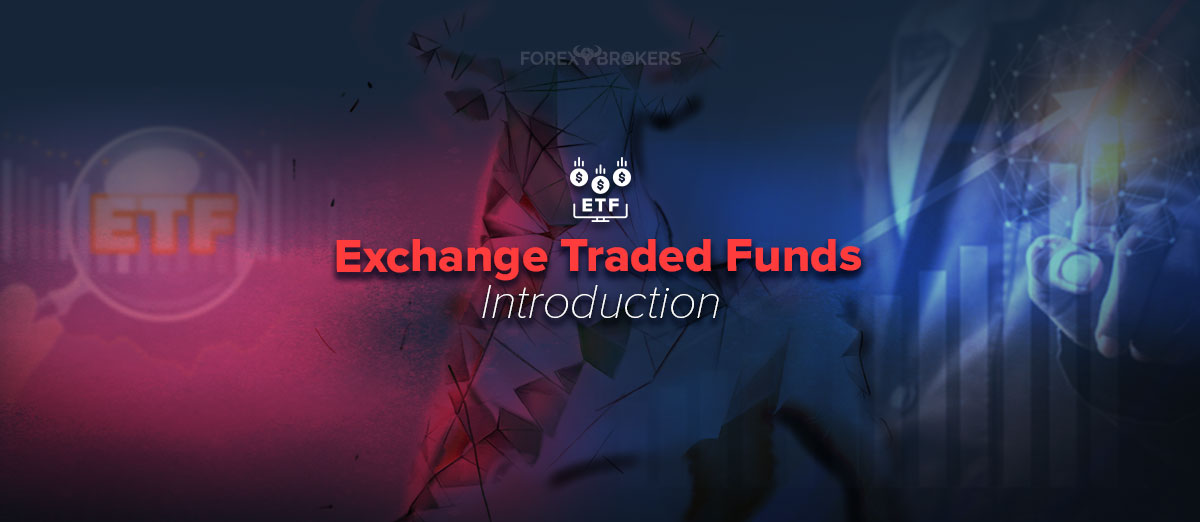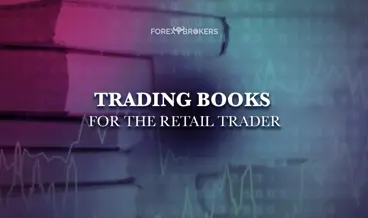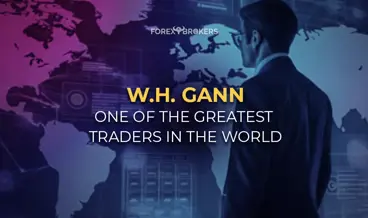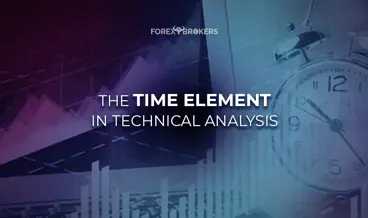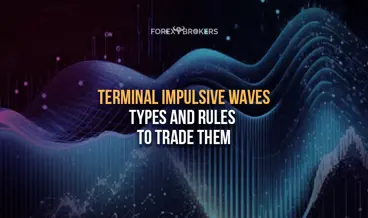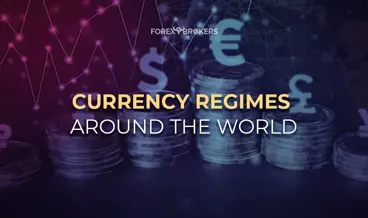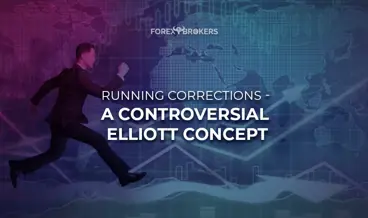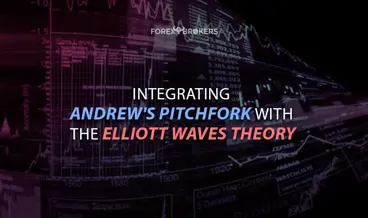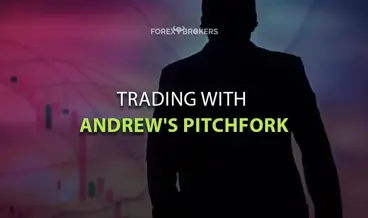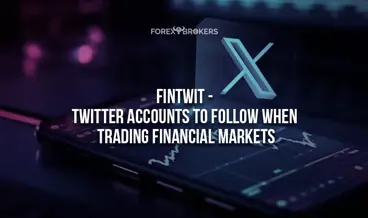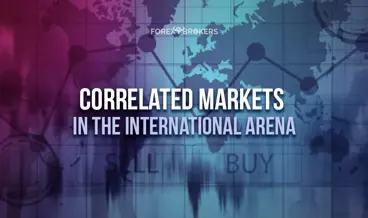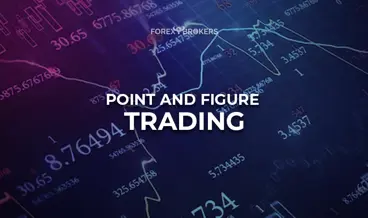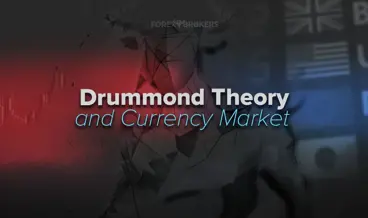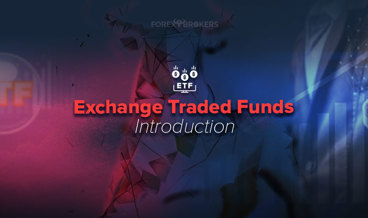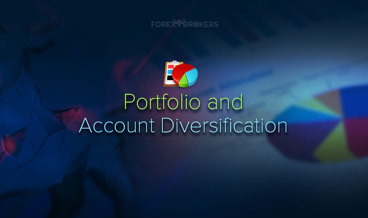An ETF, or Exchange Traded Fund, is a pooled investment vehicle that appeals to the retail trader due to its low costs and diversification benefits. The world of pooled investments is a complex one, different than what the regular investor is familiar with, but increasing in popularity in the United States.
Because the United States is the largest equity market in the world, the ETFs there are most liquid. However, other markets offer ETFs, too, with the Japanese market being another example. In fact, one of the most active central banks in the world when it comes to unconventional monetary policy measures, the Bank of Japan, actively sustained the yield curve control policy by purchasing ETFs of Japanese securities.
The most famous pooled investments are mutual funds. This article will cover the basic characteristics of mutual funds as well as some types of mutual funds, only to outline the difference between different types of pooled investments.
Besides mutual funds, other products have increased in popularity, but they belong to the same family of pooled investments. Among such products are ETFs, venture capital funds, hedge funds, buyout funds, and separately managed accounts.
To understand the nature of the ETF industry, one must know precisely what the differences are between various pooled investments. As such, a big part of this article deals with presenting such products, and then focusing on particularities of the ETF industry, what they are used for, and why retail traders, as well as professional investors, seek to obtain diversification benefits through getting exposure to an ETF or more.
Finally, we will end up with the most popular ETFs in the 2020s, but not for the sake of making an investment recommendation. Instead, by detailing the info of some ETFs, the reader will find it easier to understand the product.

Closed-End and Open-End Mutual Funds
Mutual funds and ETFs are pooled investment vehicles that allow the retail trader to participate with just a little investment. Unlike hedge funds, for example, that require an investment of a million dollars or more, an ETF or a mutual fund may require an investment of as little as fifty dollars.
As the name suggests, a mutual fund is a pooled investment in which investors have a claim on the assets. In other words, investors pool the money together and the fund invests based on its thematic. Finally, the proceeds are distributed on a pro-rata basis, depending on the value/performance of the fund.
The key to understanding how a mutual fund works is to start with the so-called NAV, or Net Asset Value. This value is computed on a daily basis, and it changes depending on the performance of the fund.
Each investor in the fund receives a number of shares in proportion to the investment made. As such, once the investments are “pooled” together, an investment manager deploys the capital based on the investment thematic.
Various types of mutual funds exist, starting with bond mutual funds, money market funds, and even hybrid funds that combine investment in the stock market with the safety of the fixed-income market. The investment manager has a mandate, and it will deploy the capital accordingly.
If the mutual funds accept new investments, they are called open-end mutual funds. If not, they are called closed-end mutual funds. As the reader will find out later in the article, ETFs are a combination between a closed-end and an open-end mutual fund.
Open-End Mutual Funds
As the name suggests, open-end funds issue new shares every time a new investment is accepted. Naturally, because the NAV is calculated daily, that is the value used. If you want, this is the market value of the fund, and the shares will be attributed in direct proportion to the investment made.
The same principle is used when an investor wishes to withdraw the funds – the NAV serves as the base for evaluating each share, and makes a withdrawal. This is one of the weaknesses in the open-end mutual funds industry. To satisfy the withdrawals, a certain part of the pooled funds must remain available in cash. Otherwise, if the cash level is low and withdrawals arise, the investment manager must liquidate from positions, often at unwanted levels and in illiquid markets.
This drawdown is eliminated by a closed-end fund, as there is no pressure on the investment manager to handle the cash flows into and out of the fund.
Closed-End Mutual Funds
A closed-end fund does not accept new investors. It issues shares based on the investments pooled together at the launch of the funds, and then the shares are traded among other investors.
As such, as the value of the shares rises or falls, investors may choose to exit. To do so, investors will look for a counterparty in the market. Therefore, closed-end funds often trade at a premium or discount when compared to the NAV of their assets. In other words, strong performing closed-end funds will see increased demand for their shares as new investors are willing to pay a market premium over the NAV, just the same way as investors in the stock market may choose to pay a high price for a company’s shares despite high multiples. The opposite, of course, is valid for the closed-end funds that underperform.
Other Mutual Funds
A further classification of mutual funds considers the types of fees paid to participate. Based on such criteria, no-load and load funds exist.
A load fund charges an annual fee and an additional charge, usually in the form of a percentage for the “privilege” of investing in the fund or making a withdrawal. Strong performing funds that have an investment manager with a strong reputation in the investing industry will typically charge such fees.
In a way, it makes sense. For a reputational investment manager to accept new funds, a fee is charged. A fee is also charged for pulling funds out of the investment vehicle, as such a decision may affect performance for the rest of the investors that want to remain invested.
Naturally, a no-load fund has no fee for investing or for the fund’s redemption. However, based on the annual NAV performance, a no-load fund may charge a fee.
A bond mutual fund, as suggested by its name, invests in the bond market. Various subtypes of funds exist, such as funds that invest only in corporate bonds, or others that invest only in sovereign bonds, or a mix of the two. Furthermore, inflation-protected bonds, high yield in emerging markets, etc., are also used as investment vehicles by an investment manager of a bond mutual fund.
Money market mutual funds focus on short-term money market securities. Think here of repos or anything with maturities ranging from overnight to ninety days. Anything beyond transforms the money market fund into a bond mutual fund.
Hedge Funds
A hedge fund is probably the most famous type of pooled investment product. Due to the popularity of some Hollywood movies, people tend to believe that anything happening in financial markets has to do with the hedge funds industry.
In reality, a hedge fund is nothing but a pooled investment vehicle that is allowed to use various trading strategies when compared to other such vehicles. The notion of a hedge fund has existed for decades and can be traced to the first half of the twentieth century.
For the retail trader, having access to a hedge fund is difficult due to the high minimum investment required. Also, a hedge fund flies under the radar of the US Securities and Exchange Commission (SEC) in the sense that it does not need to be registered with the SEC if the number of investors does not exceed five hundred. As such, most hedge funds opt to sell their shares via private placement, as they do not have access to public markets.
A hedge fund has a dedicated strategy so that investors know what to expect before pooling investments together. For example, some hedge funds have a global macro perspective, using derivatives on interest rates to profit from how various economies perform. Others have a long/short approach, in the sense that they buy or go long on stocks perceived to have an intrinsic value higher than the current market value, and sell or go short on stocks that have an intrinsic value lower than the current market value.
At the start of 2021, retail traders grouped in a trading community under a Reddit forum triggered massive losses for hedge funds exposed on the short side of a company called GameStop. The short-squeeze that followed was epic, with losses exceeding hundreds of millions of dollars.
It is worth mentioning here that shorting and going long on stocks is different. When buying, or going long, the profitability is unbounded, while the risk is bounded (100% of the investment). However, when selling or going short, the risk is unbounded while the profitability is limited to the initial investment.
Hedge Funds as Alternative Investments
A hedge fund is an alternative investment, just like real estate or commodities. Investing in a hedge fund comes at the end of a due diligence process that results in finding the best fund that matches an investor’s expectations.
Most hedge funds function on a 2/20 basis. That is, they charge both a management fee and a performance fee. Therefore, the 2/20 refers to 2% management fee for the Assets Under Management (AUM) and 20% performance fee, typically calculated on an annual basis.
For example, let’s assume a hedge fund has AUM of $100 million and in the first year it delivers a 24% performance. The fees charged by the hedge fund are 2% based on the AUM, or $200k, and 20% based on the $240k performance.
It is common for hedge funds to use a watermark, meaning that the performance fee is charged only once for certain performance. For instance, if in the second year the hedge fund underperforms and in the third year recovers, if the previous high was not reached, the fund will not charge a performance fee. Also, a hurdle rate is common, meaning that the hedge fund will charge a performance fee only above a certain level.
The trend in the industry is that increased competition leads to a decrease in the fees charged. Therefore, the 1/10 combination is increasingly common.
Venture Capital Funds
A venture capital fund provides financing for companies in the so-called embryonic stage of their existence. Because of that, the risk taken by a venture capital fund is higher than usual, as many start-ups fail to rise to their initial expectations.
Venture capital funds are not in it for the long run – they simply offer financing in exchange for participation in the start-up and they plan to exit in a few years, typically via an Initial Public Offering (IPO).
Buyout Funds
A buyout fund looks for companies considered to be undervalued and takes them private. To do so, a buyout fund “buys” all the shares of a publicly listed company and it is especially interested in companies with many assets on their balance sheet. After a few years, as the company’s profitability improves, they exit via an IPO.
ETFs – A Combination of Closed-End and Open-End Mutual Fund
An ETF trades on the secondary market and investors buy the shares from other investors. This is one major difference between an ETF and a mutual fund, and this is why the index mutual funds were listed in the first part of the article.
ETFs trade close to their NAV value, but often the price exceeds this value. Just like with the regular common shares traded on the public markets, the share price of an ETF may vary based on how much a buyer is willing to pay for it.
Various types of ETFs exist, and, for this reason, the trader must be careful when selecting one to invest in. For example, some ETFs track a market index, like the S&P500, but leverage the returns, in some cases 4 times. Therefore, if the S&P500 index gains 1% in a trading session, the ETF will be up 4%. However, investors should be careful with high leverage, because the same ratio applies when markets decline.
Advantages of ETFs
ETFs are believed to have a major tax advantage over classic mutual funds, but there is some debate about it. However, what is a true advantage for the ETF industry is the small investment required. Basically, investors may buy as little as one share in the ETF and may also buy on margin and even sell short the shares of an ETF by borrowing them from the broker.
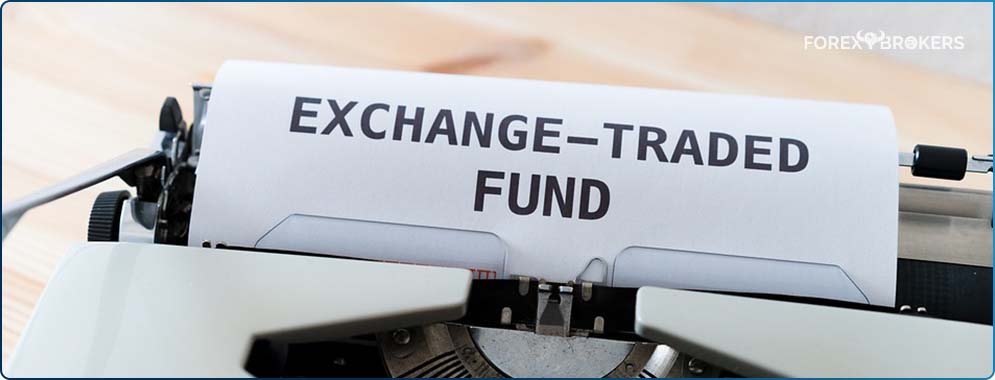
They are a cheaper way to access pooled investments and to spread the risk over various companies. As mentioned earlier, they can also lead to concentrated portfolios, so the trader must consider all aspects before investing in an ETF.
Because they increased in popularity in recent years, the liquidity of their shares improved dramatically. Therefore, traders find it easy to enter and exit positions due to the decreasing trading costs and rising interest in the ETF industry.
Getting Exposure to Entire Industry Via an ETF
The advantages listed above are enough to attract investors, but there are none so important as the diversification benefits offered by an ETF. Typically, ETFs have a theme, by tracking various sectors or subsectors or representatives of an industry. Therefore, when investing in an ETF, the risk spreads from one company to the entire sector.
Think of an investor that wants to add gold to its portfolio. Let’s say that the investor expects inflation to rise in the upcoming year and so it looks for protection. Gold is the number one hedge against inflation, so the investor wants to gain exposure to some gold.
This can be done in various ways. One way is to buy the physical metal and store it against a fee paid to the storage provider. Many investors prefer to do so, but the downside of this approach is that in times of liquidity constraints, it may be difficult to get rid of the stored gold bars.
Another way is to buy the shares of a gold miner. Simply put, the investor may look at a public company in the gold mining industry and buy the common shares. The downside of this approach is that the risk is spread between fluctuations in the price of gold and the management of the company. If the management screws up, the original plan of hedging against inflation suffers.
With ETFs, all these problems disappear. Sure, the exposure to the price of gold remains, but this was the whole point in the first place. Instead, by buying the shares of an ETF that tracks the gold industry players, the risk that the management screws up is diversified away. On top of that, there are no additional storage costs and investors have even access to dividend payments.
Most Famous ETF Sectors
ETFs have grown in popularity in recent years. Because of the advantages over other pooled investments and the diversification benefits offered, the retail trading community turned its attention toward ETFs.
There are various types of ETFs. One is gold ETFs – Exchange-Traded Funds that allow investors to gain exposure to the gold sector. Others include the tech, biotech, and pharmaceutical sectors.
At the time of writing this article, one of the most popular ETFs is ARKK – Ark Innovation. It has over $23 billion in assets, it is organized as open-end and it is an actively managed fund investing in companies from around the world engaged in disruptive innovation (e.g., Tesla, Roku, Spotify, Shopify).
Moreover, even within sectors, many ETFs exist. For example, the most popular gold ETF is the VanEck or the GaDX ETF. However, other ETFs exist, slightly different than GDX and offering a different alternative to get exposure to the gold market.
The rest of this article will present some of the most popular ETFs available to trade, but not as an investment recommendation. Instead, the aim is to present the differences between them, and to explain why the investing community needs more than one ETF in one category.
Tech Sector ETFs
The technology or tech sector is the one that bounced back strongly during the 2020 stock market meltdown. When all stock market indices in the United States dived, so did the Nasdaq100 index and the tech sector index, but it did not decline to the same extent as the Dow Jones or the S&P500.
Once it became clear to market participants that the pandemic meant remote working and social distancing, the tech sector was the desired place to invest in. As a consequence, the Nasdaq100 reversed sharply from the bear market and reached a bull market (i.e., rising more than 20% from the lows) at the fastest rate in its history. What followed was a series of new all-time highs, as Amazon, Microsoft, Apple and Google reported record earnings.
The ETFs presented below offer a quick insight into the composition of such products and what their main holdings are. The idea is to offer a balanced view of how ETFs that track the tech sector are constructed.
- VGT – Vanguard Information Technology
The VGT ETF is constructed with companies active in 3 main technological areas: hardware, software, and consulting. On the market since 2004, VGT holds over four hundred securities and pays an annual dividend of $0.63, corresponding to an annual dividend rate of 2.7%.
This ETF’s main holdings are Apple and Microsoft, with 19.58% and 15.85% weights, respectively. Other companies have smaller weights, but are equally famous – Visa, Oracle, Cisco, PayPal, etc.
At the time of writing this article, the 5-year return on the VGT ETF was over 240%, not bad for any investment in any market. One particular thing to note about the VGT is that it does not offer exposure to the semiconductor industry, while other ETFs do.
- XLK – Technology Select Sector
XLK is one ETF that goes a step further compared to VGT as it also includes companies from wireless telecommunication services, semiconductors and IT services. A particular strength of the XLK ETF is that it does not exclude particular sectors, like VGT does. Instead, it represents the ideal choice for traders that want to gain broad exposure to the tech sector.
Apple and Microsoft still dominate in the holdings, but this is due to their dividend-paying ability and annual dividend growth rate. Other companies part of the XLK ETF are Salesforce, Qualcomm and Adobe.
Just like VGT, XLK is up over 217% in the last 5 years between 2016 and 2021 and has an annual dividend yield of 0.83%.
- IYW - iShares US Technology
This is an ETF specialized in the broad technology sector in the United States and has been listed on the stock exchanges for more than 2 decades. It has a monthly average volume of almost 850 million shares and holds more than 150 securities in total.
At the end of March 2021 it traded at a P/E ratio of 36.83 and its main holdings are IBM, Microsoft and Apple. Also, Facebook, Intel, NVIDIA, and Alphabet can be found in the IYW composition.
- SOXX – iShares PHLX Semiconductor ETF
SOXX is a specialized ETF that tracks the performance of companies active in the semiconductor industry. Think of computers, smartphones, calculators, and other similar devices that depend on the semiconductor industry, and you’ll realize the particular importance of this sector. At the start of 2021, as the global economy began to pick up from the pandemic, a massive shortage of semiconductors led to disruptions in the supply chains. The event reinforced the importance of the semiconductor industry and why investors strive to get exposure to it.
Another particularity of SOXX is that it is not focusing on US stocks alone, but invests a quarter of its funds in international companies. Texas Instruments, Intel, and Broadcom are the main holdings, but decent weights are also attributed to names like Micron Technology, Advanced Micro Devices, Taiwan Semiconductor Manufacturing and Microchip Technology.
Gold ETFs
This article has already explained why investors seek exposure to the gold industry via an ETF. As a reminder, gold ETFs protect against a weakening dollar, against geopolitical uncertainty and, historically, they provide a hedge against inflation. Moreover, ETFs have some tax advantages when compared to actually owning gold bullion bars.
- VanEck – GDX
The full name is VanEck Vectors Gold Miners ETF, known by the ticker GDX. This is a market capitalization weighting index that tracks global gold mining firms. It means that the weights in the index adjust with the change in the market price of the components’ shares.
This is an open-end fund that started operating in 2006 and currently has AUM exceeding $13 billion. One of the most important things when choosing an ETF is its liquidity. Remember that investors trade the shares of an ETF just like the common shares of a regular company publicly listed on the stock exchange, so liquidity does matter.
By liquidity, investors refer to the ability to sell assets to the market at a fair price. Speed also plays an important role, but the metric that investors use is the average daily volume of the shares traded. In the case of the GDX, the average daily $ volume is close to $700 million, indicative of high liquidity.
Earlier in the article it was mentioned that one of the greatest advantages is obtaining diversification benefits within the industry. GDX tracks gold mining companies from 7 different countries, with the greatest exposure on Canadian and United States companies.
About 89% of the GDX ETF is composed of gold mining companies, and the rest belongs to companies with exposure on other precious metals and minerals and integrated mining.
Not just any company can be included in the VanEck GDX. To be eligible, a company must derive at least half of its revenue from gold mining activities and have an average daily volume bigger than 50,000 shares.

- GOEX
This ETF goes beyond GDX and tracks global stocks in the gold mining industry that are either an explorer or a developer. Remember that it takes a long time and huge costs to search for gold ore, build a gold mine, and start extracting the gold from the ground.
This fund tracks the Solactive Global Gold Explorers & Developers Total Return Index and it adjusts semiannually by considering companies that produced over 300k ounces of gold in 2 of the last 3 quarters. GOEX is almost as liquid as the GDX, with $604.31k average daily volume at the end of Q1 2021 and average daily share volume close to 20,000.
- RING
RING is another market-capitalization weighted index similar to GDX. However, it has some particularities in the sense that it is using a weighting based on the MSCI 25/50 methodology and is screening companies with hedging activities before checking the requirements to meet the criteria.
It is a relatively new ETF, launched less than a decade ago, but it managed to pool together investments in excess of $434 million. Companies from the United States and Canada make up over 70% of RING, and representative names are Newmont Corporation (22.65%), Barrick Gold Corporation (16.25%) and Wheaton Precious Metals Corporation (7.81%).
Pharmaceutical and Biotechnology Sectors ETFs
The pharmaceutical sector is another sector of strategic importance for investors. Instead of picking any one company to add to the portfolio, investors are better off owning shares in an ETF that tracks the overall industry. Typical ETFs provide exposure to US-listed multinational pharmaceutical companies, but also to companies from different parts of the world.
The strategic importance of the biotechnology sector was revealed by the COVID-19 pandemic. The pharma giant companies combined efforts with players in the biotech industry to research and develop a vaccine against the virus. As a result, in November 2020 preliminary results showed efficacy against the virus, and 6 months later there are ongoing vaccination campaigns around the world.
PPH – VanEck Vectors Pharmaceutical ETF
PPH was born over 2 decades ago and it tracks companies in the pharmaceutical sectors of various countries. Companies from the United States dominate, as they represent over 63.61% of the ETF’s weight, but companies from other countries are well represented as well – the United Kingdom (over 10%), Israel (5.14%), and Denmark (5.08%). Pfizer, Johnson & Johnson, and AstraZeneca are just a few names that are part of this ETF that developed vaccines against the COVID-19 pandemic, and thus retail investors could get exposure to them.
This ETF holds twenty-four companies and has a dividend yield of 2.25%, slightly lower than that segment’s benchmark of 2.53%.
PJP – Invesco Dynamics Pharmaceuticals ETF
PJP is an ETF that tracks the major US pharmaceutical companies and has existed since 2005. With AUM exceeding $360 million, PJP is an attractive ETF for investors looking to gain exposure to the pharmaceutical industry.
Every day, over $1.6 million worth of PJP shares exchanges hands, making it one of the most popular ETFs among retail traders. While the name may be misleading, the PJP ETF looks beyond pure pharmaceuticals companies as almost 40% of its assets are concentrated in other related sectors. For example, 10.73% of the assets are invested in the biotechnology and medical research sector, another 10.21% in biotherapeutic drugs companies, and so on. Representative companies are Amgen, Pfizer, Johnson & Johnson, and Ely Lilly.
Conclusion
Exchange traded funds offer a viable solution for retail traders to participate in pooled investments. The main advantage of investing in an ETF is the diversification benefits to a portfolio.
For the retail trader with a small portfolio, investing in other pooled investments is restricted due to the high costs and the high minimum initial investment. Therefore, an ETF solves this problem and they have increased in popularity in recent years.
The COVID-19 pandemic generated massive interest in the stock markets around the world. Because the US stock market is the most advanced in the world, the largest traded volume comes from the United States. As such, it is no wonder that the ETF industry is growing more rapidly in the United States than in other parts of the world.
However, ETFs are traded all over the world, and even central banks use them to implement unconventional monetary policies. For instance, the Bank of Japan ran out of tools in its toolkit to ease the monetary policy, and as part of the accommodative measures it buys local ETFs.
This article presented the basics of ETFs and ETF trading, focusing on understanding pooled investments and giving some examples of ETFs that are popular. The idea was that the retail trader takes a step further and investigates what sectors would offer diversification benefits to the portfolio and then does research for a suitable ETF.
To sum up, the ETF industry has grown so much that it can no longer be ignored. It is large enough to become a risk for the general market should anything go wrong, such as large redemptions when the general market declines.
